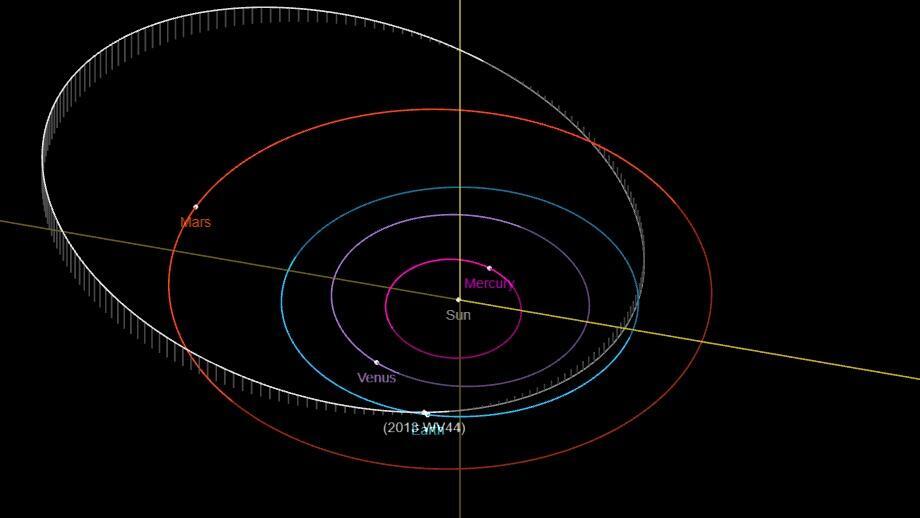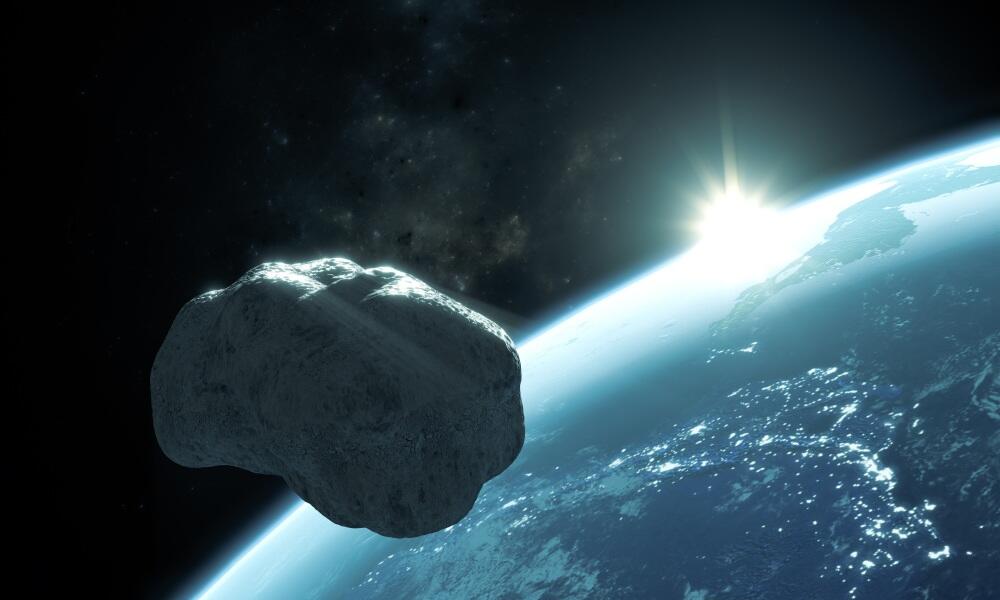NASA's Center for Near-Earth Object Studies reported that a colossal asteroid dubbed 2013 WV44 is scheduled to make its nearest approach to Earth at approximately 11 a.m. in Israel on Wednesday, June 28.
More stories:
This space rock measures around 160 meters in diameter, surpassing the length of 10 buses placed end to end. It will approach as close as 3.3 million kilometers (2,170,000 miles) to our planet.
2 View gallery


The orbit of the asteroid is marked in white, and the orbit of Earth is in light blue
(Photo: NASA)
With a velocity of 11.8 kilometers (7.3 miles) per second, it will be traveling at a speed roughly 34 times faster than the speed of sound.
Astronomers have classified the asteroid WV44 as "potentially hazardous" due to its proximity, however, it does not pose any threat to life on Earth.
2 View gallery


Asteroid WV44 has been classified as "potentially hazardous" due to its proximity, however, it does not pose any threat to life on Earth
(Photo: Shutterstock)
To put it into perspective, this distance is nearly 19 times greater than the distance between Earth and the moon. Therefore, despite its significant size, WV44 is considered safe and poses no imminent danger.
Numerous space agencies, including NASA, are actively monitoring hundreds of other objects that have the potential to be hazardous to life on Earth. It is worth noting that the task of detecting these objects can be challenging, and as a result some are only identified shortly before a potential impact.
In a significant achievement, NASA carried out a spacecraft collision with a small asteroid last year, effectively modifying its trajectory. This groundbreaking event not only represented humanity's inaugural deliberate alteration of a celestial object's motion but also served as a comprehensive demonstration of asteroid deflection technology.
This successful endeavor has instilled confidence that a similar approach could be successfully deployed in the event of an asteroid that poses an actual threat to Earth. By leveraging the knowledge and experience gained from this milestone, scientists and researchers are equipped with valuable insights into potential strategies for protecting humanity from any future Earth-threatening asteroids. This breakthrough paves the way for further advancements and reinforces our ability to safeguard our planet against celestial hazards.

